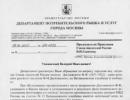Natural nuclear reactor in approx. Gabon: Natural Nuclear Reactor in Oklo Nuclear Reactor in Gabon
Korol A.Yu. - student of class 121 SNNYaEiP (Sevastopol National Institute nuclear energy and industry.)
Head - Ph.D. , Associate Professor of the Department of YaPPU SNYaEiP Vah I.V., st. Repina 14 sq. fifty
In Oklo (a uranium mine in the state of Gabon, near the equator, West Africa), a natural nuclear reactor operated 1900 million years ago. Six "reactor" zones were identified, in each of which signs of a fission reaction were found. Remains of actinide decays indicate that the reactor has operated in a slow boil mode for hundreds of thousands of years.
In May - June 1972, with ordinary measurements of the physical parameters of the party natural uranium received at the enrichment factory of the French city of Pierlate from the African Oklo deposit (a uranium mine in Gabon, a state located near the equator in West Africa), it was found that the isotope U - 235 in the incoming natural uranium is less than standard. It was found that uranium contains 0.7171% U - 235. The normal value for natural uranium is 0.7202%
U - 235. In all uranium minerals, in all rocks and natural waters of the Earth, as well as in lunar samples, this ratio is fulfilled. The Oklo deposit is so far the only case recorded in nature when this constancy was violated. The difference was insignificant - only 0.003%, but nevertheless it attracted the attention of technologists. There was a suspicion that there had been sabotage or theft of fissile material, i.e. U - 235. However, it turned out that the deviation in the content of U-235 was traced all the way to the source of uranium ore. There, some samples showed less than 0.44% U-235. Samples were taken throughout the mine and showed systematic decreases in U-235 across some veins. These ore veins were over 0.5 meters thick.
The suggestion that U-235 "burned out", as happens in the furnaces of nuclear power plants, at first sounded like a joke, although there were good reasons for this. The calculations showed that if mass fraction groundwater in the reservoir is about 6%, and if natural uranium is enriched to 3% U-235, then under these conditions a natural nuclear reactor can start working.
Since the mine is located in a tropical zone and quite close to the surface, the existence of a sufficient amount of groundwater is very likely. The ratio of uranium isotopes in the ore was unusual. U-235 and U-238 are radioactive isotopes with different half-lives. U-235 has a half-life of 700 million years, and U-238 decays with a half-life of 4.5 billion. The isotopic abundance of U-235 is in nature in the process of slowly changing. For example, 400 million years ago natural uranium should have contained 1% U-235, 1900 million years ago it was 3%, i.e. the required amount for the "criticality" of the vein of uranium ore. It is believed that this was when the Oklo reactor was in a state of operation. Six "reactor" zones were identified, in each of which signs of a fission reaction were found. For example, thorium from the decay of U-236 and bismuth from the decay of U-237 have only been found in the reactor zones in the Oklo field. Residues from the decay of actinides indicate that the reactor has been operating in a slow boiling mode for hundreds of thousands of years. The reactors were self-regulating, since too much power would lead to the complete boiling off of the water and to the shutdown of the reactor.
How did nature manage to create the conditions for a nuclear chain reaction? First, in the delta of the ancient river, a layer of sandstone rich in uranium ore was formed, which rested on a strong basalt bed. After another earthquake, common at that violent time, the basalt foundation of the future reactor sank several kilometers, pulling uranium vein. The vein cracked, groundwater penetrated into the cracks. Then another cataclysm raised the entire "installation" to the current level. In nuclear furnaces of nuclear power plants, fuel is located in compact masses inside the moderator - a heterogeneous reactor. This is what happened in Oklo. Water served as a moderator. Clay "lenses" appeared in the ore, where the concentration of natural uranium increased from the usual 0.5% to 40%. How these compact lumps of uranium were formed is not precisely established. Perhaps they were created by seepage waters that carried away clay and rallied uranium into a single mass. As soon as the mass and thickness of the layers enriched with uranium reached critical dimensions, a chain reaction arose in them, and the installation began to work. As a result of the operation of the reactor, about 6 tons of fission products and 2.5 tons of plutonium were formed. Most of the radioactive waste remains inside the crystalline structure of the uranite mineral, which is found in the body of the Oklo ores. Elements that could not penetrate the uranite lattice due to too large or too small ionic radius diffuse or leach out. In the 1900 million years since the Oklo reactors, at least half of the more than 30 fission products have been bound in the ore, despite the abundance of groundwater in this deposit. Associated fission products include the elements: La, Ce, Pr, Nd, Eu, Sm, Gd, Y, Zr, Ru, Rh, Pd, Ni, Ag. Some partial Pb migration was detected and Pu migration was limited to less than 10 meters. Only metals with valency 1 or 2, i.e. those with high water solubility were carried away. As expected, almost no Pb, Cs, Ba, and Cd remained in place. The isotopes of these elements have relatively short half-lives of tens of years or less, so that they decay to a non-radioactive state before they can migrate far in the soil. Of greatest interest in terms of long-term protection problems environment represent plutonium migration issues. This nuclide is effectively bound for almost 2 million years. Since plutonium by now almost completely decays to U-235, its stability is evidenced by the absence of excess U-235 not only outside the reactor zone, but also outside the uranite grains, where plutonium was formed during the operation of the reactor.
This unique nature existed for about 600 thousand years and produced approximately 13,000,000 kW. hour of energy. Its average power is only 25 kW: 200 times less than that of the world's first nuclear power plant, which in 1954 provided electricity to the city of Obninsk near Moscow. But the energy of the natural reactor was not wasted: according to some hypotheses, it was the decay of radioactive elements that supplied the heating Earth with energy.
Perhaps the energy of similar nuclear reactors was added here. How many are hidden underground? And the reactor at that Oklo in that ancient time was certainly no exception. There are hypotheses that the work of such reactors "spurred" the development of living beings on earth, that the origin of life is associated with the influence of radioactivity. The data show more high degree evolution of organic matter as we approach the Oklo reactor. It could well have influenced the frequency of mutations of unicellular organisms that fell into the zone advanced level radiation, which led to the appearance of human ancestors. In any case, life on Earth arose and went a long way of evolution at the level of the natural radiation background, which became a necessary element in the development of biological systems.
The creation of a nuclear reactor is an innovation that people are proud of. It turns out its creation has long been recorded in the patents of nature. Having designed a nuclear reactor, a masterpiece of scientific and technical thought, a person, in fact, turned out to be an imitator of nature, which created installations of this kind many millions of years ago.
A riddle that leads to interesting thoughts!
A nuclear repository is a place where spent nuclear fuel is stored; there are many such places scattered all over the Earth. All of them were built in recent decades to safely hide the hugely dangerous by-products of nuclear power plants.
But humanity has nothing to do with one of the burial grounds: it is not known who built it and even when - scientists carefully determine its age at 1.8 billion years.
Oklo phenomenon
In 1972, at the developed uranium deposit in Oklo (Africa, Gabon), an inquisitive laboratory assistant noticed that the percentage of U-235 in the ore was below the standard by 0.003%. Despite the apparent insignificance of the deviation, for scientists it was an emergency. In all terrestrial uranium ores and even in samples delivered from the Moon, the uranium content in the ore is always 0.7202%, for what reason was ore containing 0.7171% or even less raised from the mines in Oklo?
Most of all, scientists are frightened by the incomprehensible, therefore, in 1975, in the capital of Gabon, Libreville, a Scientific Conference, where atomic scientists were looking for an explanation for the phenomenon.
After a long debate, they decided to consider the Oklo field the only natural nuclear reactor on Earth. The natural reactor, which arose 1.8 billion years ago and burned for 500 thousand years, burned out, the ore is a decay product. Everyone breathed a sigh of relief - there was one less mystery on Earth.

Alternative point of view
But not all conference participants made such a decision. A number of scientists called it far-fetched, not up to scrutiny. They relied on the opinion of the great Enrico Fermi, the creator of the world's first nuclear reactor, who always maintained that a chain reaction can only be artificial - too many factors must coincide by chance. Any mathematician will say that the probability of this is so small that it can be uniquely equated to zero.
But if this suddenly happened and the stars, as they say, converged, then a self-controlled nuclear reaction for 500 thousand years ... At a nuclear power plant, several people monitor the operation of the reactor around the clock, constantly changing its operating modes, preventing the reactor from stopping or exploding. The slightest mistake - and get Chernobyl or Fukushima. And in Oklo, for half a million years, everything worked by itself?
Most stable version
Those who disagree with the version of the natural nuclear reactor in the Gabon mine put forward their theory, according to which the Oklo reactor is a creation of the mind. However, a mine in Gabon looks less like a nuclear reactor built by a high-tech civilization. However, the alternatives do not insist on this. In their opinion, the mine in Gabon was the place of disposal of spent nuclear fuel.
For this purpose, the place was chosen and prepared ideally: for half a million years, not a gram of radioactive substance has penetrated into the environment from the basalt "sarcophagus".
The theory that the Oklo mine is a nuclear repository is technically more apt than the "natural reactor" version. But closing some questions, she asks new ones. After all, if there was a repository with spent nuclear fuel, then there was also a reactor from where these wastes were brought. Where does he go? And where did the civilization that built the burial ground disappear to?
In West Africa, not far from the equator, in an area located on the territory of the state of Gabon, scientists made an amazing find. This happened at the very beginning of the 70s of the last century, but so far representatives of the scientific community have not come to a consensus - what was found?
Deposits of uranium ore are a common phenomenon, although quite rare. However, the uranium mine discovered in Gabon turned out to be not just a deposit of a valuable mineral, it worked like ... a real nuclear reactor! Six uranium zones were discovered, in which a real uranium fission reaction took place!
Studies have shown that the reactor was launched about 1900 million years ago and worked in the mode of slow boiling for several hundred thousand years.
The opinions of representatives of science about the phenomenon were divided. The majority of pundits took the side of the theory, according to which, the nuclear reactor in Gabon started up spontaneously due to an accidental coincidence of the conditions necessary for such a start.
However, not everyone was satisfied with this assumption. And there were good reasons for that. Many things said that the reactor in Gabon, although it does not have parts outwardly similar to the creations of thinking beings, is still a product of intelligent beings.
Let's take a look at some facts. Tectonic activity in the area in which the reactor was found was unusually high for the period of its operation. However, studies have shown that the slightest shift in the soil layers would necessarily lead to a shutdown of the reactor. But since the reactor has worked for more than one hundred millennia, this did not happen. Who or what froze the tectonics for the period of the reactor operation? Maybe it was done by those who launched it? Further. As already mentioned, groundwater was used as a moderator. To ensure the constant operation of the reactor, someone had to regulate the power given out by it, since if it was in excess, the water would boil away and the reactor would stop. These and some other points suggest that the reactor in Gabon is a thing of artificial origin. But who on earth possessed such technology two billion years ago?
Like it or not, the answer is simple, although somewhat banal. Only aliens from outer space could do this. It is quite possible that they came to us from the central region of the Galaxy, where the stars are much older than the Sun, and their planets are older. In those worlds, life had the opportunity to originate much earlier, at a time when the Earth was not yet a very comfortable world.
Why did the aliens need to create a stationary high-power nuclear reactor? Who knows... Maybe they have equipped a "space recharging station" on Earth, or maybe...
There is a hypothesis that highly developed civilizations at a certain stage of their development "take patronage" of life emerging on other planets. And they even have a hand in turning lifeless worlds into habitable ones. Maybe those who built the African miracle belonged to just such? Maybe they used the energy of the reactor for terraforming? Scientists are still arguing how the earth's atmosphere, so rich in oxygen, arose. One of the assumptions is the hypothesis of the electrolysis of the waters of the oceans. And electrolysis, as you know, requires a lot of electricity. So maybe the aliens created the Gabon reactor for this? If so, then it is apparently not the only one. It is very possible that someday others like him will be found.
Be that as it may, the Gabonese miracle makes us think. Think and look for answers.
Natural nuclear reactors exist! At one time, the outstanding atomic physicist Enrico Fermi pathetically declared that only a man could create an atomic reactor ... However, as it turned out after many decades, he was wrong - he also produces nuclear reactors! They existed for many hundreds of millions of years ago, bubbling with nuclear chain reactions. The last of them, the natural nuclear reactor Oklo, went out 1.7 billion years ago, but still breathes radiation.
Why, where, how, and most importantly, what are the consequences of the emergence and activity of this natural phenomenon?
Natural nuclear reactors may well be created by Mother Nature herself - for this it will be enough for the necessary concentration of the uranium-235 isotope (235U) to accumulate in one "place". An isotope is a kind of chemical element, which differs from others by a greater or lesser number of neutrons in the nucleus of an atom, while the number of protons and electrons remains constant.
For example, uranium always has 92 protons and 92 electrons, however, the number of neutrons varies: 238U has 146 neutrons, 235U has 143, 234U has 142, 233U has 141, etc. ... In natural minerals - on Earth, on other planets and in meteorites - the bulk is always 238U (99.2739%), and the isotopes 235U and 234U are represented only by traces - 0.720% and 0.0057%, respectively.
A nuclear chain reaction begins when the concentration of the uranium-235 isotope exceeds 1% and the more intense it is, the more it is. Precisely because the uranium-235 isotope is very scattered in nature, it was believed that natural nuclear reactors could not exist. By the way, in nuclear reactors of power plants, as fuel, and in atomic bombs, it is 235U that is used.
However, in 1972, in uranium mines near Oklo, in Gabon, Africa, scientists discovered 16 natural nuclear reactors that were actively operating almost 2 billion years ago ... Now they have already stopped, and the concentration of 235U in them is less than it had to be in "normal" natural conditions — 0,717%.
This, although meager, difference, compared with "normal" minerals, forced scientists to draw the only logical conclusion - natural atomic reactors really operated here. Moreover, the confirmation was the high concentration of decay products of uranium-235 nuclei, similar to what happens in artificial reactors. When an atom of uranium-235 decays, neutrons escape from its nucleus, hitting the nucleus of uranium-238, they turn it into uranium-239, which in turn loses 2 electrons, becoming plutonium-239...
It was this mechanism that generated more than two tons of plutonium-239 in Oklo. Scientists calculated that at the time of the "launch" of the natural nuclear reactor Oklo, about 2 billion years ago (the half-life of 235U is 6 times faster than 238U - 713 million years), the share of 235U was more than 3%, which is equivalent to industrial enriched uranium.
In order for the nuclear reaction to continue, a necessary factor was the slowing down of fast neutrons that flew out of the nuclei of uranium-235. This factor, as in man-made reactors, was ordinary water.
 The reactor began to work at the time of flooding of porous rocks rich in uranium in Oklo with groundwater, and acted as some kind of neutron moderators. The heat released as a result of the reaction caused the water to boil and evaporate, slowing down and subsequently stopping the nuclear chain reaction.
The reactor began to work at the time of flooding of porous rocks rich in uranium in Oklo with groundwater, and acted as some kind of neutron moderators. The heat released as a result of the reaction caused the water to boil and evaporate, slowing down and subsequently stopping the nuclear chain reaction.
And after the whole rock cooled and all short-lived isotopes decayed (these are the so-called neutron poisons, which are able to absorb neutrons and stop the reaction), water vapor condensed, flooding the rock, and the reaction resumed.
The scientists calculated that the reactor was “turned on” for 30 minutes until the water evaporated, and “turned off” for 2.5 hours until the steam condensed. This cyclical process resembled modern geysers and continued for several hundred thousand years. During the decay of the nuclei of the decay products of uranium, mainly radioactive isotopes of iodine, five isotopes of xenon were formed.
It was all 5 isotopes in various concentrations that were found in such rocks of a natural reactor. It was the concentration and ratio of the isotopes of this noble gas (xenon is a very heavy and radioactive gas) that made it possible to establish the frequency with which the Oklo reactor “worked”.
The decay of the nucleus of the uranium-235 atom (large atoms) causes the emission of fast neutrons, for a further nuclear reaction must be slowed down by water (small molecules)
It is known that high radiation is detrimental to living organisms. Therefore, in the places of existence of natural nuclear reactors, obviously, there were “dead spots”, where there was no life, because DNA is destroyed by radioactive ionizing radiation. But at the edge of the spot, where the radiation level was much lower, there were frequent mutations, which means that new species constantly arose.
Scientists still do not clearly know how life on Earth began. They only know that this required a strong energy impulse, which would have contributed to the formation of the first organic polymers. It is believed that such impulses could be lightning, volcanoes, meteorite and asteroid falls, however, in last years it is proposed to consider as a starting point the hypothesis that such an impulse could be created by natural nuclear reactors. Who knows …
In 1972, an ancient nuclear reactor was discovered in Africa on the territory of the Republic of Gabon. At first, scientists found rich deposits of uranium ore. When its composition was checked, it turned out that this ore had already been used.
Given the age of the ancient reactor at 2 billion years, who could have created it to generate energy in those distant times? The most reliable answer is that one of the past civilizations of people on Earth did it.
Huge reserves of uranium ore were used
The source of uranium ore discovered in Gabon (Oklo area) is the largest source of uranium ore in the world. Therefore, he aroused the interest of scientists in many countries after the message of French geologists. They began to investigate the composition of uranium ore. It turned out that the rock contains a lot of uranium-238 and very little uranium-235, which is of interest to people.Uranium-238 is essentially spent nuclear fuel.

Samples of uranium ore from Oklo (Gabon).
Who built the most complex nuclear reactor 2 billion years ago? Complex design reactor in Africa with its 16 power units speaks of the high technological level of its creators in those distant times.
For millions of years, the structures of the buildings of a nuclear reactor could crumble to dust. However, radioactive isotopes continue to emit energy after thousands of years. Spent uranium-238 speaks of thousands of years of operation of a giant nuclear reactor. Small remnants of uranium-235, which is used in energy production, point to the sites of fuel storage for the reactor of an ancient civilization.
There are facts, but science is silent about the ancient nuclear reactor
This is where the usual story begins, when modern science does not want to recognize the facts, passing them off as a mistake. If it cannot be recognized as a mistake, then these facts are simply hushed up. What happened to the ancient nuclear reactor of the past civilization in Gabon.
Versions of the origin of the ancient nuclear reactor
natural nuclear reactor
The most common version of scientists is that a natural nuclear reactor was found in Oklo. Allegedly rich uranium ores were flooded with water, which caused a nuclear reaction. There were no intelligible explanations of how “nature” managed to start the reactor and maintain its operation for thousands of years.
There are deposits of uranium-235 in different parts of the world, but there has not been a natural nuclear reactor reproducing the operation of at least one power unit. Recall that in Gabon found 16 pockets of spent nuclear fuel!
Nowhere else in the world have such huge reserves of spent uranium-238 been found. Physicists doubt that it is possible to produce this element in natural conditions in such quantities. Until now, uranium fission has been carried out only in an artificial environment with the help of a person.
Alien nuclear burial ground
This version is supported by the convenient location of uranium deposits. The Oklo area is characterized by a stable surface of the Earth. Reserves of uranium rest in the bowels of a thick basalt slab. There are no earthquakes and other natural disasters.
Aliens hypothetically could use this area to bury the remains of nuclear production. But did it make sense to do it on Earth? Doubts are added by the presence of uranium-235, as well as 16 foci, reminiscent of the design of a giant, once operating, reactor.
Folk legends
The legends and oral beliefs of the people inhabiting this area speak of an ancient race of demi-gods. In ancient times, according to legend, a developed powerful civilization lived in the province of Oklo, which was looking for treasure in the rocks in order to become invincible. Aborigines consider the place where the ancient nuclear reactor is located mysterious and mystical.
Probably scientists should have listened more seriously to the stories of local residents. Folk wisdom does not arise from scratch, but can serve as a source of knowledge for revealing the secrets of science and life.
Lessons from Past Civilizations
Today there are scientists and historians who understand that this Earth was inhabited by more than one of our civilizations. Suffice it to recall the unique finds confirming that there was , , Mayan civilization, , mankind - how many mysterious ancient civilizations has our planet seen?

A lot of evidence has already been found for phenomena that go beyond ideas. modern science. , superpowers, ancient civilizations - all this could help people realize the meaning of their stay on Earth and prevent the sad end of our humanity.
Walking along the path of rejecting the divine principle of the world, scientists drive themselves into a corner with the narrow framework of scientific dogmas. The Creator's intention is difficult to understand for those living in a world of constant competition and struggle. If you choose the path of returning to your traditions, handed down by the Creator to people, you may be able to survive, unlike many other previous civilizations on Earth.






